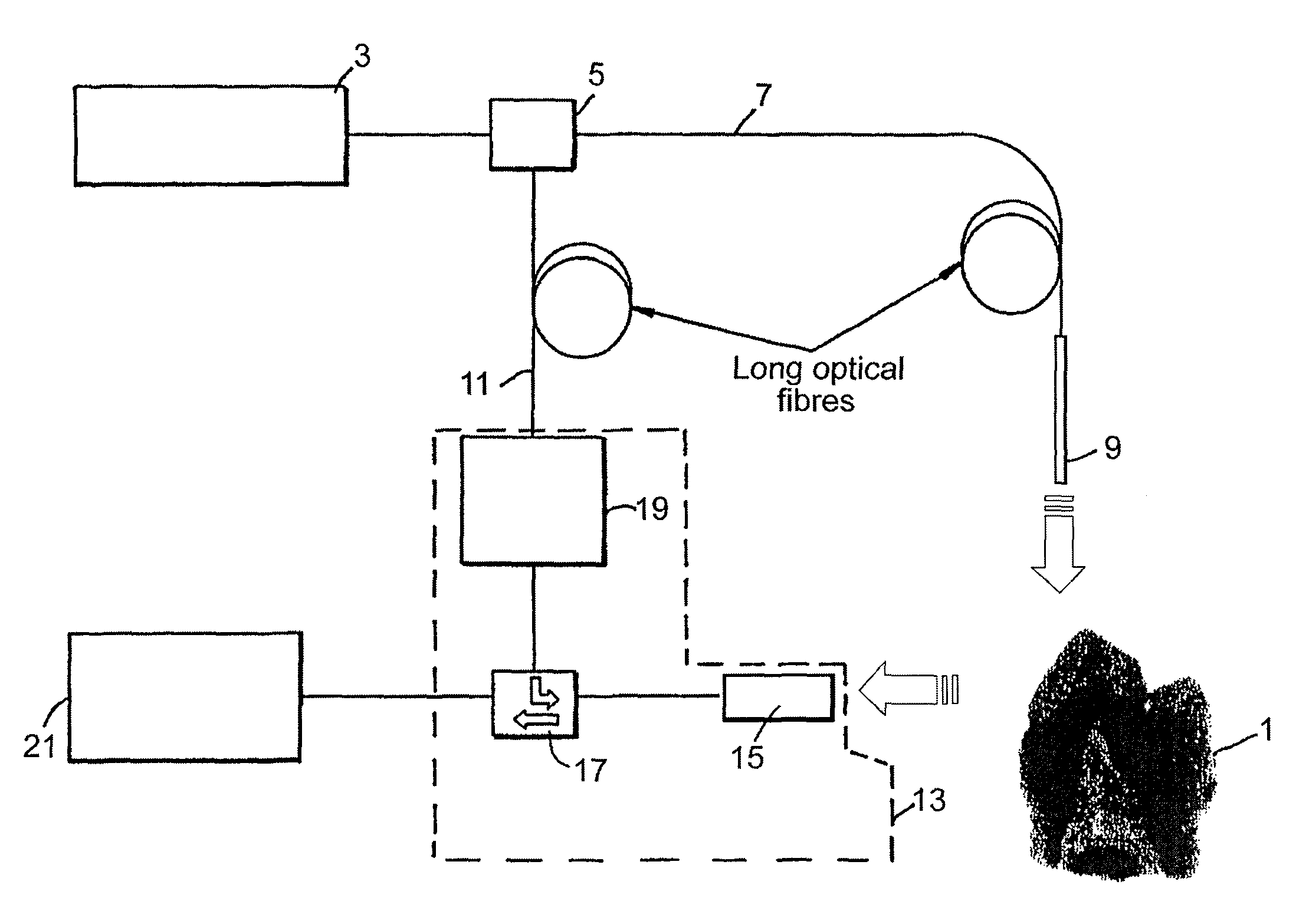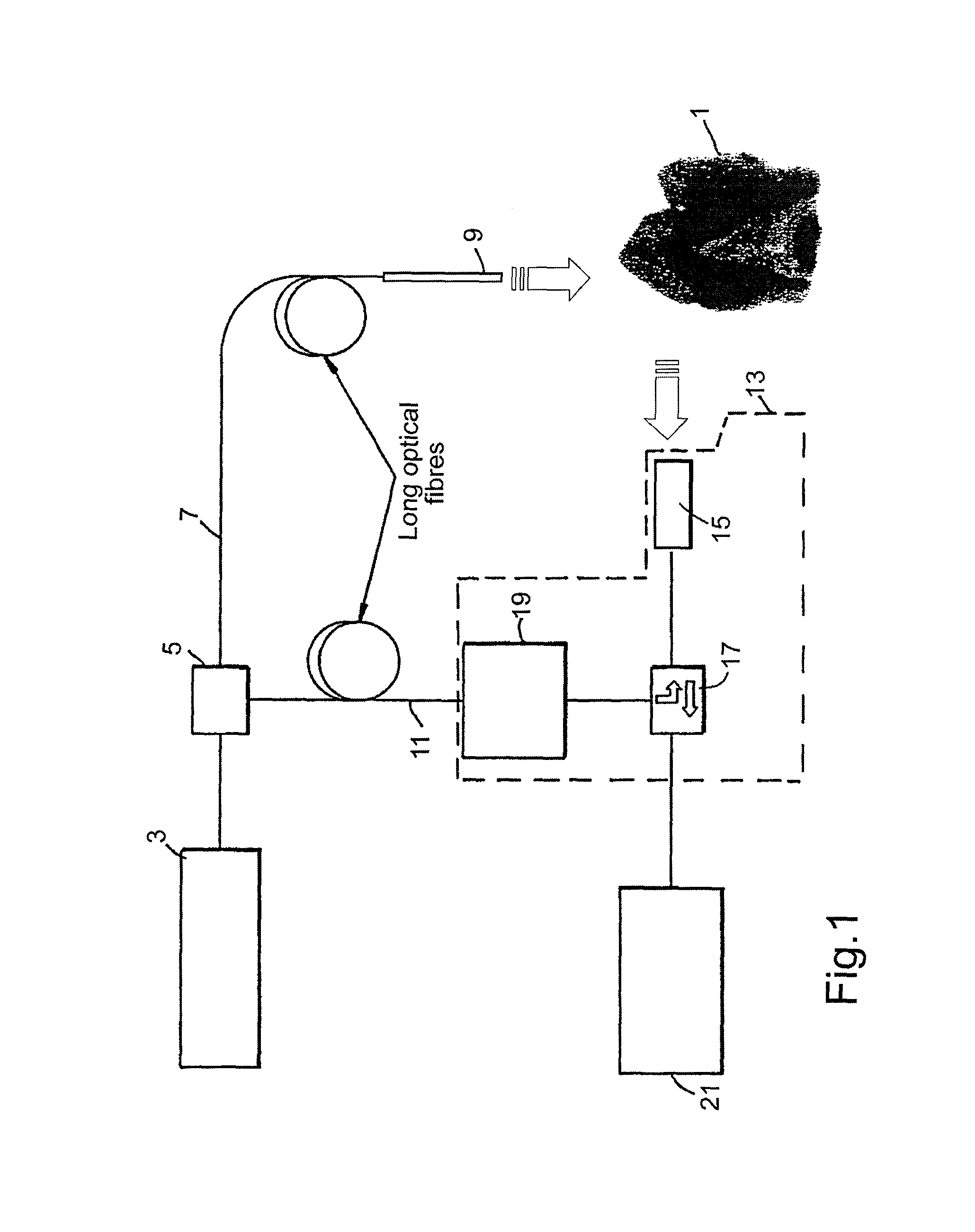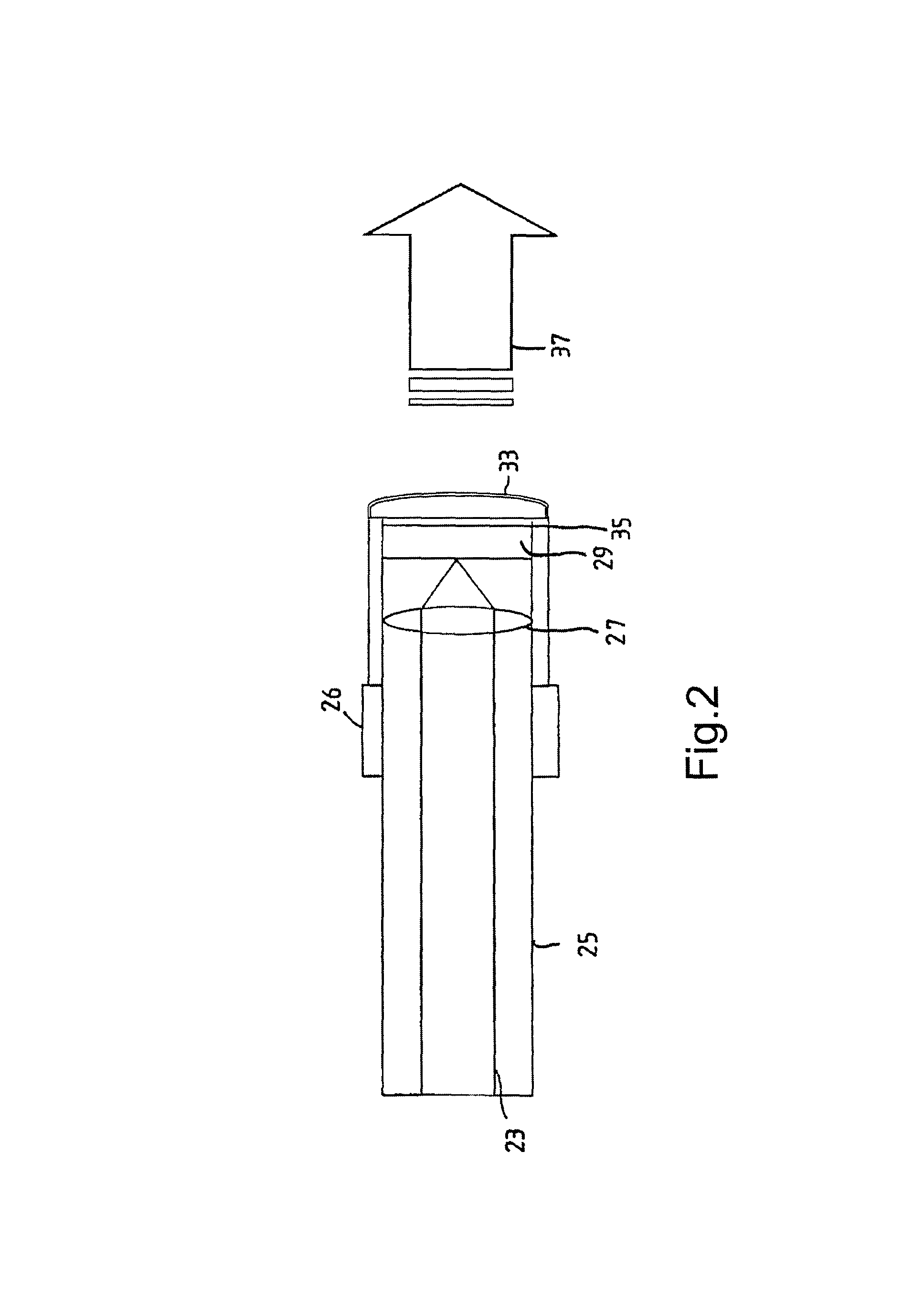Radiation probe and detecting tooth decay
- Summary
- Abstract
- Description
- Claims
- Application Information
AI Technical Summary
Benefits of technology
Problems solved by technology
Method used
Image
Examples
Embodiment Construction
[0170]FIG. 1 shows a schematic outline of the functions of the THz probe. The object to be examined by the probe is tooth 1. An ultra fast laser source 3 provides pulsed radiation to a beam splitter 5. (Although, a continuous wave source could also be used as will be explained in relation to FIGS. 17 to 19). Beam splitter 5 then splits the beam to travel along two fibre optic cables 7, 11. Fibre optic cable 7 is connected to the THz emitter 9. Fibre Optic 11 is provided to the THz detection system 13. The THz detection system 13 has a THz detector 15 which detects radiation which is either passed through and / or been reflected from the tooth 1. The delay control may alternatively be placed in the fibre optic cable 7 leading to the THz emitter 9.
[0171]Information from the detected THz beam is then encoded onto the laser source beam from fibre optic cable 11. Fibre optic circulator 17 is in effect a radiation valve which is used to direct the beam from fibre 11 into the THz detector fo...
PUM
 Login to View More
Login to View More Abstract
Description
Claims
Application Information
 Login to View More
Login to View More - R&D
- Intellectual Property
- Life Sciences
- Materials
- Tech Scout
- Unparalleled Data Quality
- Higher Quality Content
- 60% Fewer Hallucinations
Browse by: Latest US Patents, China's latest patents, Technical Efficacy Thesaurus, Application Domain, Technology Topic, Popular Technical Reports.
© 2025 PatSnap. All rights reserved.Legal|Privacy policy|Modern Slavery Act Transparency Statement|Sitemap|About US| Contact US: help@patsnap.com



